-
Where Shinto and Buddhist Deities Are Worshipped Together
In the past, Shinto kami (a broad term referring to deities or spirits) and Buddhist divinities were generally enshrined side by side in Japan. When Buddhism arrived from mainland Asia in the sixth century, the Japanese were already practicing the animistic religion that later became known as Shinto. To integrate the new religion, Buddhist sutras were read in front of the kami and temples were built within shrine precincts. Jinguji Temple (also known as Wakasa Jinguji) reflects this thousand-year history of syncretic Shinto and Buddhist worship (shinbutsu shugo), remaining a place where kami and Buddhas are revered together.
One visual reminder of the syncretic relationship between Buddhism and Shinto is the shimenawa rope suspended above the entrance of the temple’s main hall. Shimenawa, which are traditionally woven from hemp fiber or rice straw, are used at Shinto shrines to mark the boundaries of sacred spaces. After bowing and removing your shoes, go up the stairs and turn around to take in the view. You will see that the curve of the shimenawa perfectly frames the mountains to the east. The placement of the rope subtly expresses the reverence for mountains that is characteristic of the Shinto religion.
The main hall of Jinguji Temple is a nationally designated Important Cultural Property. It is said to have been rebuilt in 1553 by Asakura Yoshikage (1533–1573), a powerful daimyo lord who ruled part of Echizen Province (present-day Fukui Prefecture). An interesting feature of the hall is that the traditional carvings of elephants and baku dream-eaters, which are usually situated on outside columns facing outward, are located on the inside at Jinguji. The reason for this reversal, as well as the motivation behind the Asakura clan’s rebuilding of the temple, are unknown. Jinguji is indeed a temple shrouded in mystery. -
-
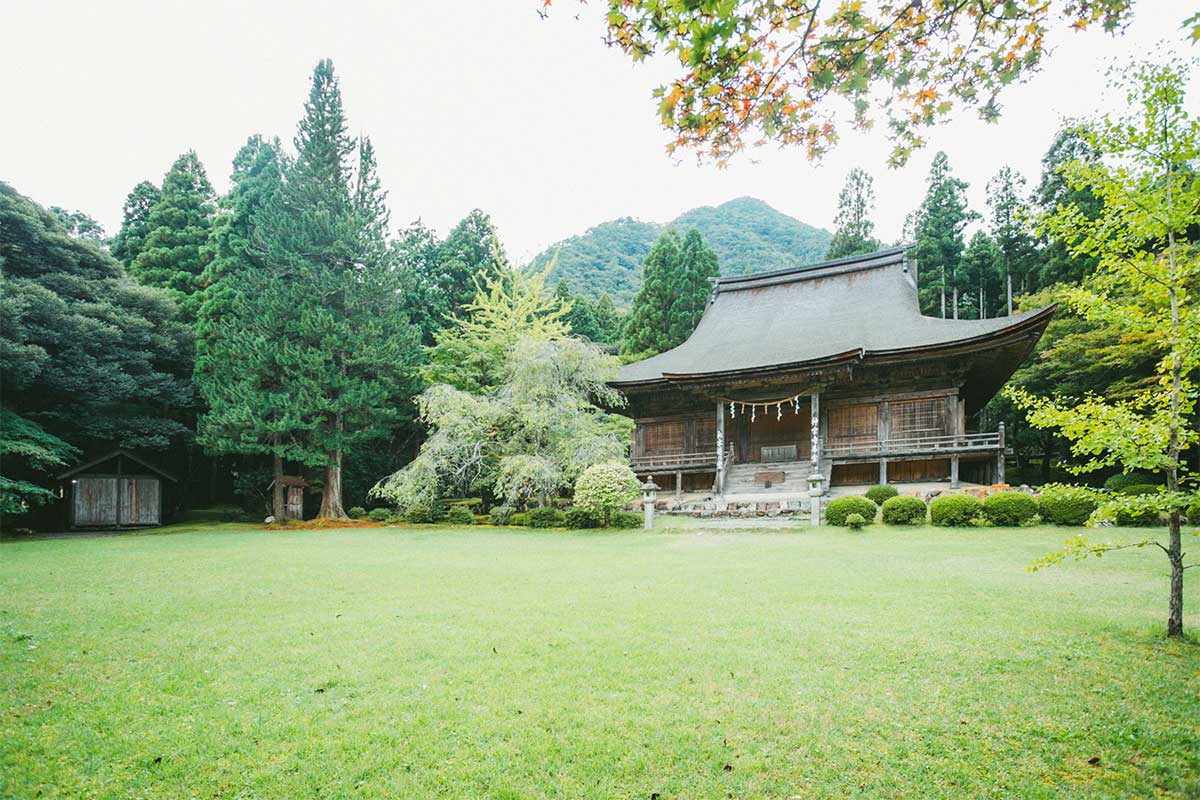 The main hall and garden as seen from the viewing area
The main hall and garden as seen from the viewing area -
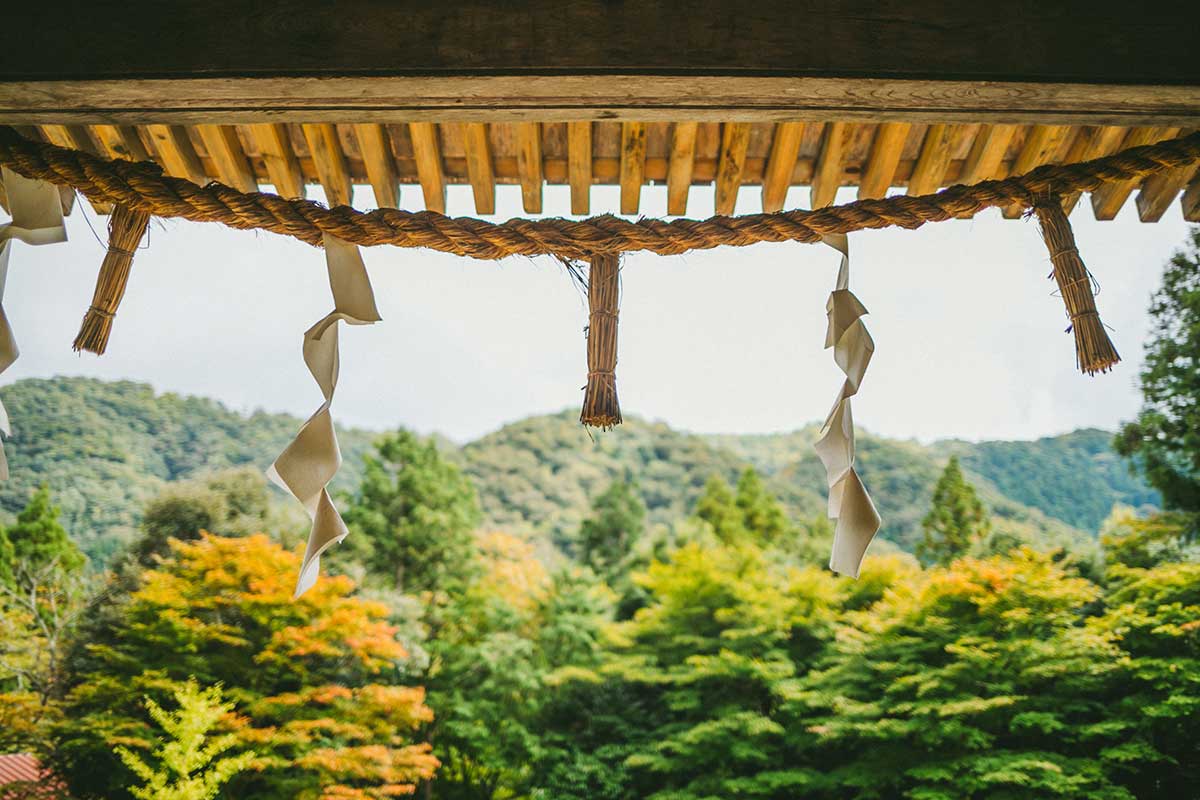 The mountain as seen from the main hall with the shimenawa (sacred rope)
The mountain as seen from the main hall with the shimenawa (sacred rope)
-
-
The Starting Point of the Omizu Okuri Ritual
Jinguji holds an ancient ritual reflecting the strong ties that existed between Obama and Nara since the era when Nara was the capital of Japan (710–784). On March 2nd, following a Shinto-style purification ceremony that features archery, water drawn from a sacred spring on the grounds of Jinguji is blessed for the solemn Omizu Okuri (“water-sending”) ritual. A procession of white-robed yamabushi monks holding large torches takes the sacred water to the nearby Unose area. There they ceremonially pour the water into the Onyu River, symbolically sending it via a legendary underground waterway to the Wakasa Well in Todaiji Temple in Nara. The sacred water is believed to arrive in Todaiji ten days later for the famous Omizutori (“water-drawing”) ritual held on March 12th. This tradition began in the 8th century and has been preserved for over 1,300 years. -
-
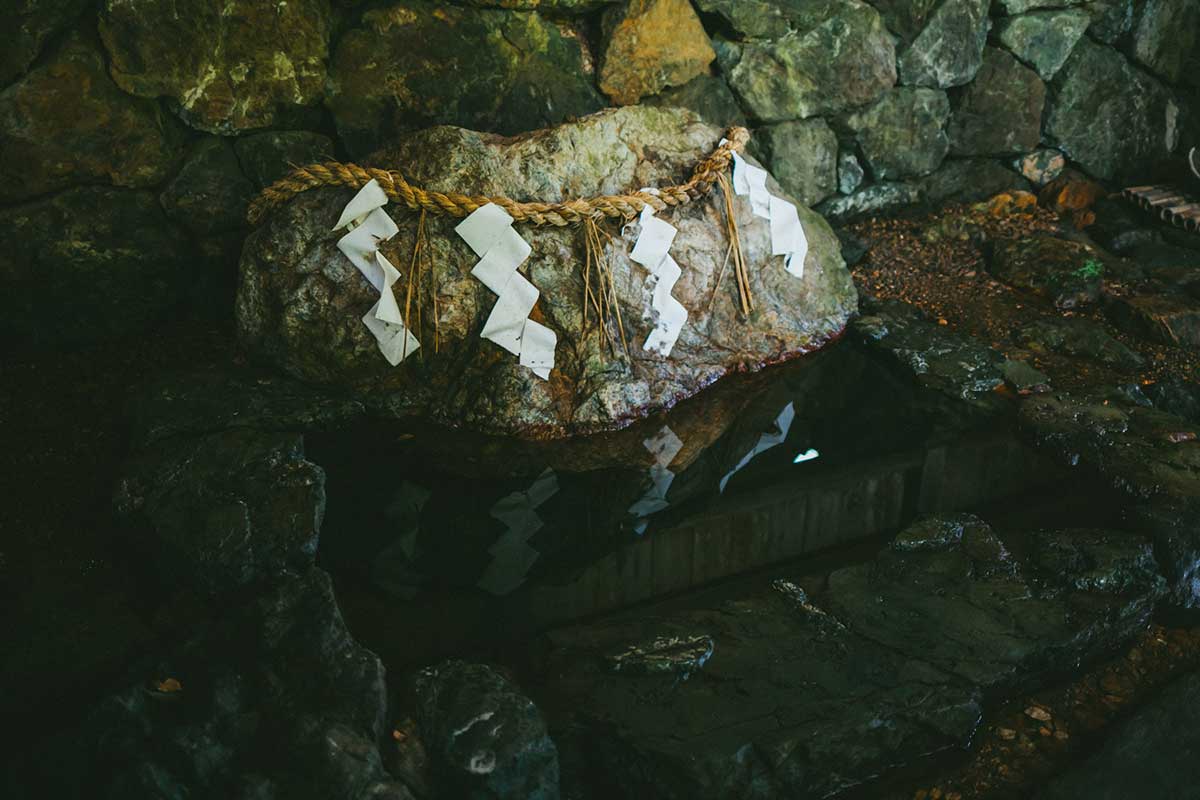 The "holy water well" to the left of the main hall
The "holy water well" to the left of the main hall -
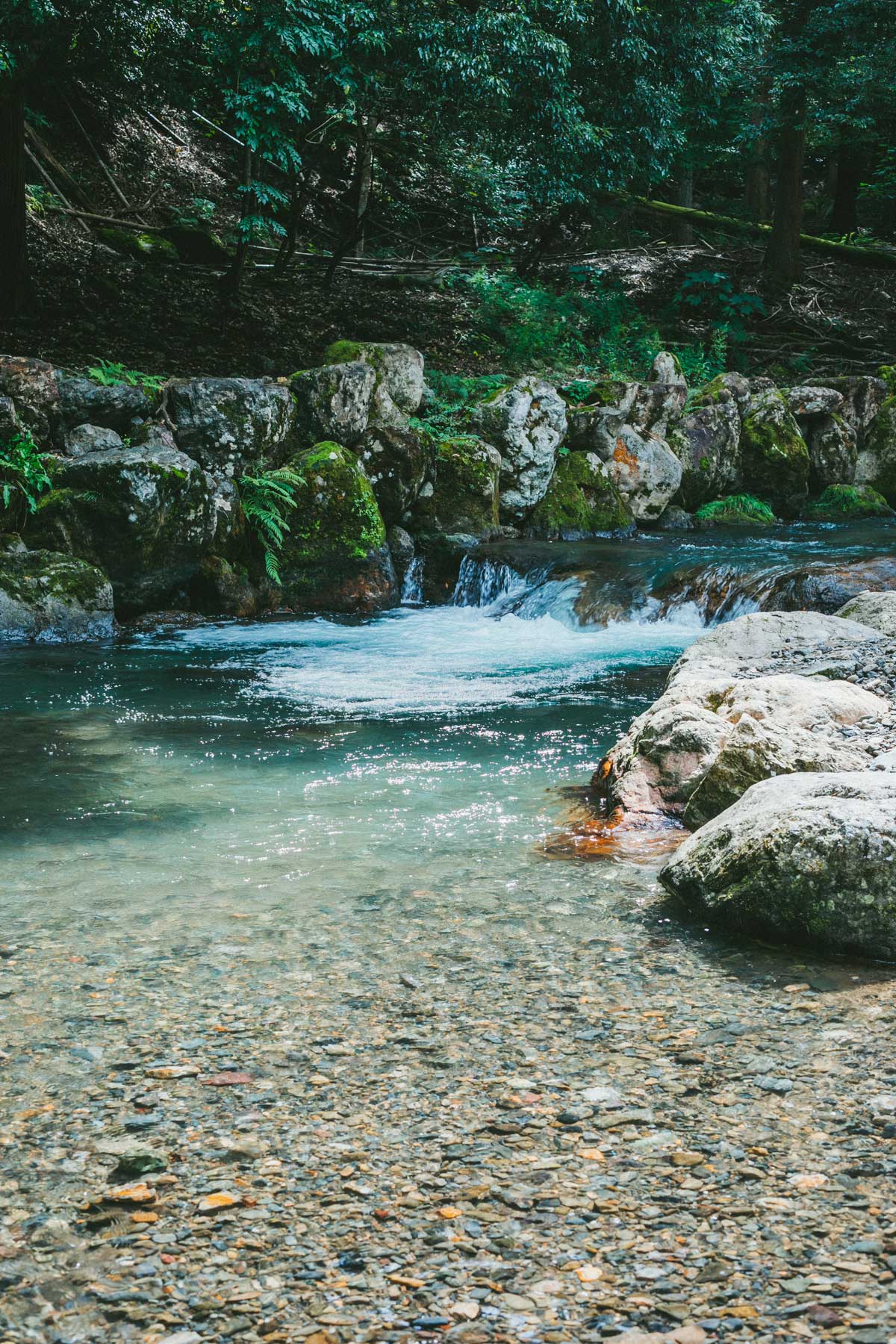 “Unose", upstream from Jinguji Temple
“Unose", upstream from Jinguji Temple
-
-
Praying at Jinguji Temple
Unlike some other temples in Obama, photographing the objects of worship or entering the inner sanctum is not permitted at Jinguji. Since Shinto kami and Buddhist divinities are enshrined together, the rites for worship are also different than most. Stand or kneel quietly in the outer sanctum and, as in a Shinto shrine, bow twice, clap twice, and bring your hands together to pray. Once you have said your silent prayer, bow once to finish.
In the center of the main altar at Jinguji is a seated statue of Yakushi Buddha (the deity of medicine and healing) surrounded by the Twelve Divine Generals, who serve as guardians of the principal object of worship. To the left of Yakushi Buddha is a statue of the Thousand-Armed Kannon (the bodhisattva of compassion), flanked by Fudo Myo-o (the Immovable Wisdom King) and Bishamonten (the Guardian of the North), two fearsome protector deities. To the right is a hanging scroll bearing the names of the enshrined Shinto deities. Unlike in Buddhism, Shinto statuary is nearly nonexistent, so the scroll serves as a representation of the kami. To the left of the altar is another hanging scroll featuring a bell-shaped crest. The bell motif has been used to symbolize the kami since the era when they were considered formless and their presence was “confirmed” by the ringing of a bell in the wind.
The syncretic worship of Shinto and Buddhism that lasted for over a thousand years was brought to an end in 1868, when the government of the recently enthroned Emperor Meiji (1852–1912) decreed that the two religions must be separated. The government strongly encouraged Shinto practices, while countless temples were relocated or destroyed altogether. Today, however, the two religions coexist, and Jinguji remains a place where one can worship both Buddhist and Shinto deities. -
-
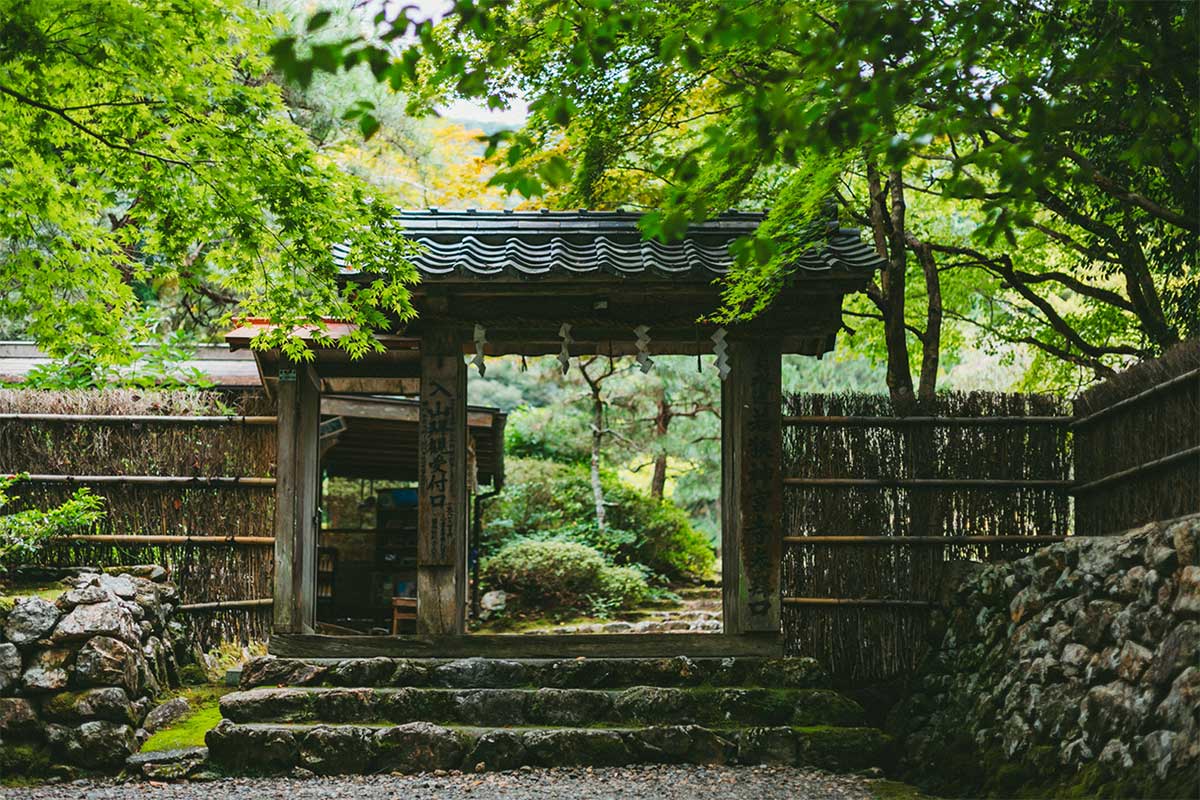 The gate that stands quietly, separating the world of Shintoism and Buddhism from this world.
The gate that stands quietly, separating the world of Shintoism and Buddhism from this world.
-
